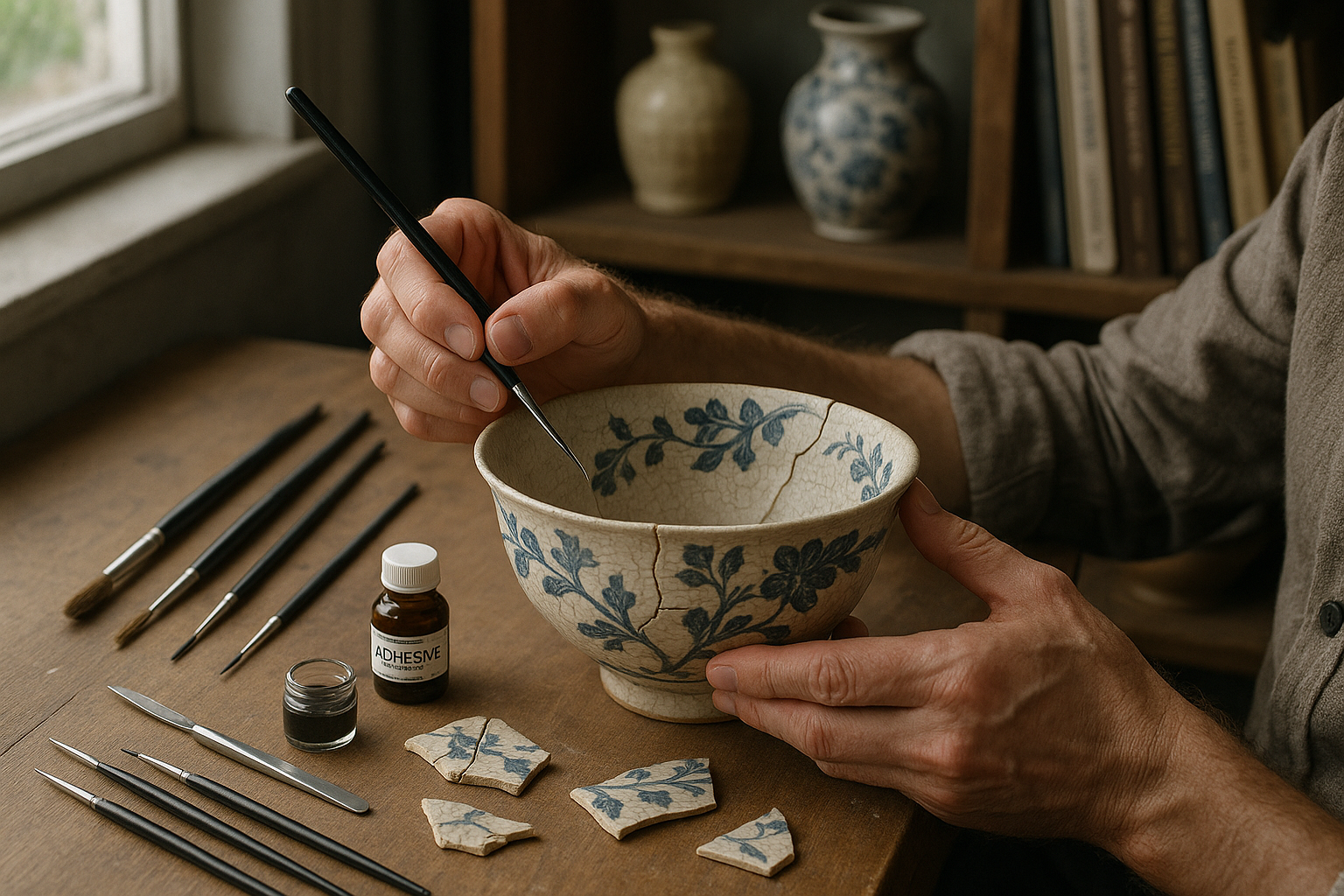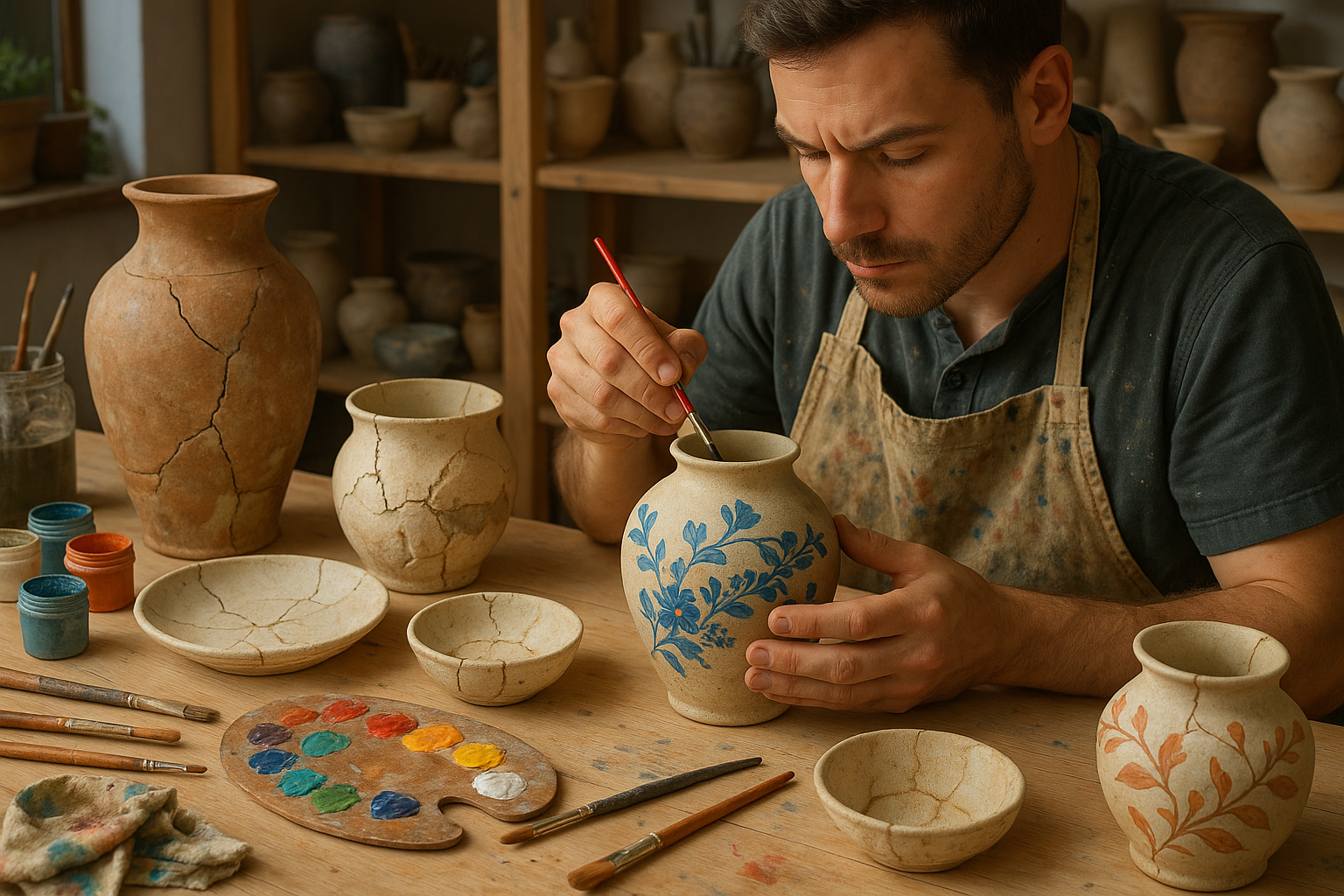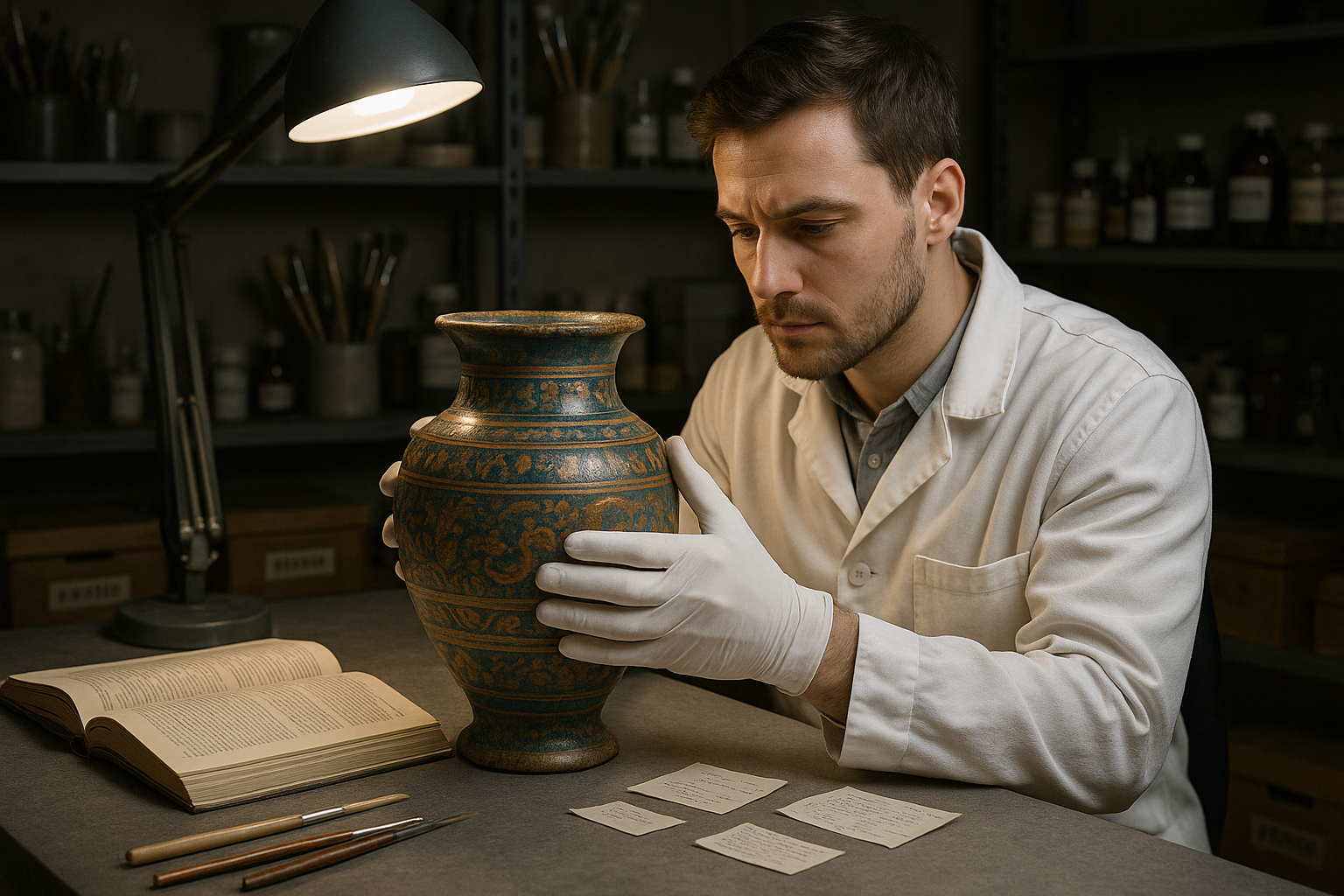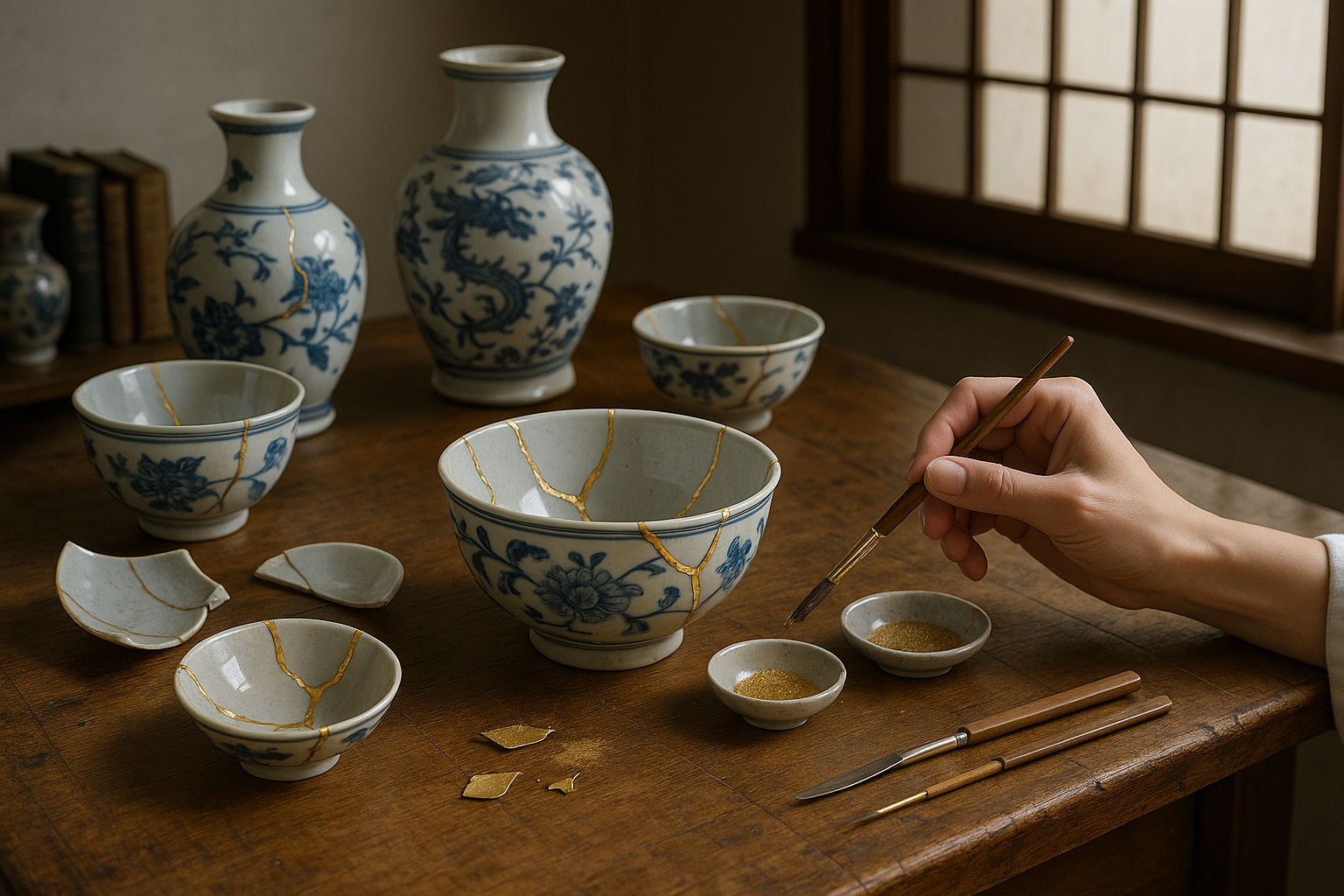In the world of art and antiquities, few things capture the essence of culture and history as poignantly as pottery. 🌍 This seemingly simple craft, born from earth, water, and fire, transcends mere functionality. It stands as a testament to human creativity, innovation, and tradition. As we embark on a journey to explore the rich history of historic pottery styles, we unearth not just objects, but the very stories and legacies of civilizations long past.
Pottery, with its diverse forms and styles, offers a unique lens into the cultural tapestries of societies. From the meticulously crafted vases of Ancient Greece to the intricate ceramics of the Ming Dynasty, each piece of pottery serves as a historical document, providing insights into the values, beliefs, and daily lives of the people who created them. Pottery is not just about clay and glaze; it is about identity, connection, and expression.
Imagine holding a piece of ancient pottery. It’s not just an artifact; it’s a bridge to another era. You can almost feel the hands of the artisan who crafted it, sense the environment in which it was made, and understand the purpose it served. This is the timeless elegance of pottery—it is both universal and profoundly personal. As we delve deeper into this subject, we’ll uncover the various styles and techniques that define historic pottery, exploring how each region’s unique geography and cultural influences shaped their ceramic traditions.
Our exploration will begin with an overview of some of the earliest known pottery, tracing its origins back to ancient times. The journey will take us through the sandy dunes of ancient Egypt, where pottery was not just utilitarian but also held spiritual significance. We’ll then navigate through the complex patterns of Islamic ceramics, where geometry and artistry merge to create stunningly beautiful pieces.
As we move further east, the allure of Asian pottery styles will captivate us. From the serene elegance of Japanese tea bowls to the detailed artistry of Chinese porcelain, each piece tells a story of cultural exchange, technological innovation, and artistic mastery. The famed Ming vases, with their delicate blue and white patterns, are not just objects of beauty but symbols of the era’s trade and prosperity.
The journey doesn’t end in Asia. We will also traverse the vibrant landscapes of the Americas, where indigenous pottery styles speak volumes of the deep connection between communities and their environment. The Pueblo pottery of the American Southwest, with its bold designs and earthy colors, reflects a deep spiritual relationship with the land. In contrast, the intricate patterns of Peruvian ceramics reveal a society rich in myth and tradition.
Throughout our exploration, we will highlight the technical aspects of pottery making—how the choice of clay, the firing process, and the application of glaze all contribute to the final masterpiece. These technical details not only enhance our appreciation of the art form but also underscore the ingenuity and resourcefulness of artisans across the ages.
Finally, we’ll reflect on the legacy and influence of historic pottery styles in contemporary art and design. Pottery has not remained static; it continues to inspire modern creators who draw on traditional techniques while infusing their work with new perspectives. The timeless elegance of pottery is as relevant today as it was centuries ago, reminding us of our shared heritage and the enduring power of human creativity. ✨
By the end of this exploration, you’ll not only have a deeper appreciation for the beauty and complexity of historic pottery styles but also an understanding of how these ancient crafts continue to resonate in our modern world. So, let us journey together into the heart of this ancient art form, uncovering the stories and secrets held within each unique piece.
Unveiling Ancient Craftsmanship: The Artistry Behind Greek Pottery
The ancient Greeks were renowned for their advancements in many fields, from philosophy and democracy to art and architecture. Among their many contributions to world culture, Greek pottery stands out as a remarkable testament to their artistic prowess and innovative spirit. The pottery styles that emerged from ancient Greece not only reflect the aesthetic preferences of the time but also provide invaluable insights into the daily lives, beliefs, and technological advancements of Greek society.
Greek pottery can be broadly categorized into three main periods: Geometric, Archaic, and Classical. Each period is characterized by distinct styles and techniques, showcasing the evolution of artistic expression and technical skill over time. During the Geometric period, which spanned from around 900 to 700 BCE, pottery was adorned with intricate patterns of lines, circles, and other geometric shapes. This era saw the emergence of the dipylon style, named after the Dipylon Cemetery in Athens where many examples were found.
As the Archaic period dawned, from 700 to 480 BCE, pottery styles began to evolve with the introduction of more complex forms and the use of figures in art. This period is marked by the Black-Figure technique, where artists painted silhouetted figures with a glossy black slip on the natural red clay of the pottery. This technique allowed for detailed depiction of human figures, animals, and mythological scenes. The Archaic period set the stage for the Classical period, where the Red-Figure technique took prominence. In this style, the background was filled in with black slip, leaving the figures in the natural red of the clay, allowing for even greater detail and expression.
Understanding the Geometric Patterns of Ancient Greece
The Geometric period of Greek pottery is a fascinating study of how abstraction and symbolism played a central role in early Greek art. The pottery from this era is characterized by its use of linear motifs, such as spirals, triangles, and meanders, meticulously painted in a repetitive manner. These patterns were not merely decorative; they often held symbolic meanings or conveyed information about the vessel’s use or the status of its owner.
The Geometric style is most famously represented by large funerary vases, known as kraters, used as grave markers. These kraters often depicted funerary scenes or battles, reflecting the societal values of honor and heroism. The geometric patterns on these vases were sometimes accompanied by simplified human figures, which gradually became more detailed and lifelike as artists became more confident in their abilities.
One of the most significant aspects of Geometric pottery is how it laid the groundwork for later developments in Greek art. The emphasis on symmetry, balance, and proportion seen in Geometric patterns would continue to influence Greek art and architecture for centuries. Moreover, the evolution from abstract to representational art can be traced through the gradual refinement of these early styles. To delve deeper into the intricacies of Geometric patterns, check out this insightful video on YouTube: “The Geometric Art of Ancient Greece” by ArtHistoryChannel.
The Evolution of Form: From Utility to Art in Roman Pottery
As Greek influence spread throughout the Mediterranean, it left a profound impact on the Roman world. Roman pottery, while distinct in its own right, inherited many stylistic and technical innovations from the Greeks. Initially, Roman pottery was primarily utilitarian, designed for practical purposes such as storage, cooking, and transportation. However, as Rome’s wealth and influence grew, so did the complexity and artistic value of its pottery.
One of the most notable forms of Roman pottery is terra sigillata, a type of fine, red-gloss pottery that became highly prized throughout the Roman Empire. This pottery was often decorated with intricate relief designs, depicting mythological scenes, daily life, and even historical events. Terra sigillata was mass-produced in large workshops, indicating a sophisticated level of industrial organization and distribution. The popularity of terra sigillata highlights the shift in Roman society towards a greater appreciation of art and aesthetics, even in everyday objects.
In addition to terra sigillata, Romans also produced a wide variety of other pottery styles, each with its own unique characteristics. For instance, African Red Slip ware was known for its bright red color and high-quality finish, while Samian ware was renowned for its durability and intricate decoration. These styles reflect the diversity of Roman society and the vastness of its trade networks, as pottery styles and techniques were exchanged and adapted across different regions.
Comparing Greek and Roman Pottery Styles
To better understand the relationship between Greek and Roman pottery, consider the following table comparing their key characteristics:
| Characteristic | Greek Pottery | Roman Pottery |
| Primary Use | Artistic and ceremonial | Utilitarian and decorative |
| Key Styles | Black-Figure, Red-Figure, Geometric | Terra Sigillata, African Red Slip |
| Decoration Techniques | Painting with slip | Relief and slip decoration |
| Common Motifs | Mythology, battles, daily life | Mythology, daily life, historical events |
This table highlights the evolution from the primarily artistic and ceremonial functions of Greek pottery to the more utilitarian yet still decorative uses in Roman pottery. The use of relief in Roman pottery also reflects a technological advancement that allowed for more elaborate and durable designs.
The Resurgence of Pottery: Medieval and Renaissance Innovations
As the ancient world transitioned into the medieval period, pottery continued to play an essential role in daily life, although the styles and techniques underwent significant transformations. During the early medieval period, pottery was mostly functional, with simpler designs reflecting the more austere lifestyle of the time. However, as Europe moved into the Renaissance, there was a renewed interest in art and culture, leading to innovations in pottery that rivaled those of ancient times.
The Renaissance period saw the introduction of maiolica, a type of tin-glazed pottery that became popular in Italy. This technique allowed for vibrant colors and detailed designs, often depicting biblical scenes, classical mythology, or contemporary life. Maiolica pottery was highly prized and became a symbol of wealth and sophistication. Its popularity spread throughout Europe, influencing the development of pottery styles in other regions.
Another significant development during the Renaissance was the advent of porcelain in Europe. Although porcelain had been produced in China since the Tang dynasty, it was not until the 16th century that European potters, particularly in the Medici court in Florence, began to experiment with producing their own versions. This innovation marked a turning point in the history of pottery, as porcelain became a highly sought-after commodity, leading to the establishment of prestigious manufactories like Meissen and Sèvres.
The Influence of Eastern Pottery on Western Styles
The interchange of pottery techniques and styles between the East and the West has been a driving force in the evolution of pottery throughout history. The introduction of porcelain to Europe is a prime example of this cultural exchange, with the Chinese mastery of porcelain inspiring European craftsmen to innovate and experiment. The fascination with Chinese porcelain led to the development of Delftware in the Netherlands, which sought to imitate the delicate blue and white designs of Chinese pottery.
To explore the intricate process of creating maiolica pottery and its historical significance, watch this informative YouTube video: “The Art of Maiolica: Renaissance Pottery” by ArtHistoryOnline.
Contemporary Pottery: A Fusion of Tradition and Innovation
In the modern era, pottery has continued to evolve, blending traditional techniques with contemporary innovations. Today, potters draw inspiration from a vast array of historical styles while experimenting with new materials, forms, and technologies. This fusion of old and new has resulted in a dynamic and diverse landscape of pottery that reflects both individual creativity and cultural heritage.
One of the most significant trends in contemporary pottery is the focus on sustainability and eco-conscious practices. Many modern potters are dedicated to using locally sourced materials and environmentally friendly methods to create their pieces. This commitment to sustainability not only reduces the environmental impact of pottery production but also connects artists more closely with their local communities and natural surroundings.
Another noteworthy trend is the resurgence of traditional pottery techniques, such as wheel throwing and hand-building, in response to the increasing mechanization and mass production of ceramics. This return to craftsmanship emphasizes the value of handmade objects and the unique qualities that distinguish them from machine-made counterparts. By embracing traditional techniques, contemporary potters are preserving the rich heritage of pottery while also infusing it with new life and creativity.
The Role of Technology in Modern Pottery
Technology has played a transformative role in the evolution of pottery in recent years. Advances in digital tools and techniques, such as 3D printing and computer-aided design (CAD), have expanded the possibilities for ceramic artists. These technologies allow for the creation of intricate and complex forms that would be difficult or impossible to achieve using traditional methods. Additionally, digital tools enable artists to experiment with new textures and surfaces, further pushing the boundaries of what is possible in pottery.
- 3D Printing: Allows for precise and complex shapes, opening up new avenues for artistic expression.
- Glaze Chemistry: Advanced understanding of glaze composition leads to more vibrant and varied finishes.
- Online Platforms: Artists can share their work globally, reaching new audiences and markets.
The intersection of technology and tradition in modern pottery is a testament to the enduring appeal of this ancient art form. As artists continue to explore new possibilities, the rich history of pottery serves as both a foundation and a source of inspiration for future innovations. 🌟
For a visual exploration of how technology is shaping contemporary pottery, check out this captivating YouTube video: “Tech and Tradition: Modern Pottery Innovations” by CeramicArtsChannel.

Conclusion: The Timeless Allure of Historic Pottery Styles
The journey through the rich history of historic pottery styles has been nothing short of a fascinating exploration of human creativity and cultural evolution. From the intricate designs of ancient civilizations to the refined aesthetics of more recent centuries, pottery serves as a testament to our enduring quest for beauty and functionality. 🌍✨
As we delved into the myriad of styles that have emerged across different cultures and eras, several key themes emerged. Firstly, pottery is not merely a utilitarian craft; it is an art form that reflects the social, economic, and cultural landscapes of its time. Whether it’s the bold geometric patterns of Neolithic pottery or the delicate porcelain of the Ming Dynasty, each piece tells a story of its own, revealing the values and aspirations of the people who created it.
Moreover, the evolution of pottery styles is a testament to human ingenuity and adaptability. As civilizations expanded and interacted, they exchanged not only goods but also ideas and techniques, leading to the rich tapestry of styles we recognize today. For instance, the influence of Chinese porcelain on European ceramics during the Age of Exploration illustrates the global interconnectedness that has shaped artistic expression throughout history.
Additionally, the study of pottery offers invaluable insights into technological advancements over the ages. The transition from hand-shaped clay vessels to wheel-thrown pieces, and eventually to industrially produced ceramics, marks significant milestones in human innovation. These advancements not only improved the quality and durability of pottery but also expanded its accessibility and appeal, making it an integral part of everyday life.
In reinforcing the importance of this topic, it is crucial to acknowledge pottery as a vital link to our past. It is a medium through which we can understand the daily lives, rituals, and beliefs of ancient peoples. As archaeologists unearth pottery fragments, they piece together the stories of our ancestors, offering us a glimpse into worlds long past and enriching our understanding of human history.
As you reflect on the timeless elegance of historic pottery styles, consider how these ancient art forms continue to inspire modern design and artistic expression. The resurgence of interest in artisanal crafts and the growing appreciation for handmade ceramics underscore a broader cultural shift towards valuing authenticity and heritage in a rapidly digitizing world. 🏺
We encourage you, dear reader, to immerse yourself in the world of historic pottery. Visit museums, participate in pottery workshops, or even start your own collection. By engaging with this art form, you contribute to the preservation and appreciation of a tradition that has shaped human civilization for millennia.
In closing, let us celebrate the timeless beauty and cultural significance of pottery. Share your thoughts in the comments below, and feel free to share this article with fellow enthusiasts who may find inspiration in the rich history of pottery. Together, we can continue to unearth and cherish the elegance of this enduring art form. 🎨
Further Reading and Resources:
- The Met’s Heilbrunn Timeline of Art History: Pottery in the Ancient Mediterranean
- Victoria and Albert Museum: Ceramics Collection
- The British Museum: The World of Ceramics
Thank you for joining us on this journey through time. May the timeless elegance of pottery continue to inspire and enrich your life.
—
This conclusion wraps up the article by summarizing its main points, emphasizing the importance of the topic, and encouraging engagement and further exploration. It maintains a professional and humanized tone, using emojis strategically to enhance engagement.
Toni Santos is a restoration artist and historical design specialist devoted to reviving the beauty and soul of the past. Through meticulous craftsmanship and a deep respect for heritage, Toni brings antiques back to life—preserving not just objects, but the stories they carry through time. With hands trained in traditional restoration techniques and an eye for age-worn elegance, Toni restores furniture, artworks, artifacts, and heirlooms with precision and reverence. His work reflects a belief that restoration is not correction—it’s conversation between the old and the present. Blending artistry, conservation ethics, and historical research, Toni approaches every piece as a narrative in wood, metal, leather, or fabric—each with scars that speak of eras gone by. Whether repairing a hand-carved chair or reviving a forgotten painting’s vibrance, he respects the integrity of original craftsmanship while honoring its continued life. As the creative force behind Vizovex, Toni shares before-and-after showcases, restoration walkthroughs, and visual essays exploring the techniques and philosophies behind authentic antique revival. His platform celebrates: The timeless value of handcrafted work The quiet artistry of repair and preservation The cultural memory embedded in material objects The delicate balance between age and renewal For collectors, curators, artisans, and lovers of legacy, Toni’s world is an invitation to see restoration not as fixing what’s broken—but as restoring what still lives beneath the dust of time.




